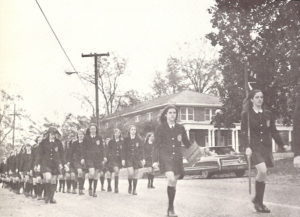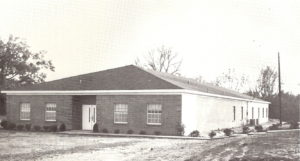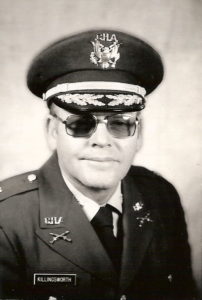Norman McKenzie would become the next President of the Academy in the summer of 1966, and under his leadership, CHA would continue a pattern of steady growth. By the Spring of 1970, there were 214 boarding students and 21 day students enrolled and a new brick President’s home had been constructed.
 But the Civil rights movement was sweeping through Mississippi, and it would not leave Chamberlain-Hunt Academy unchanged. In October of 1969, the United States Supreme Court ruled that school districts had to stop operating separate schools for white and black students. As a result, Claiborne County parents begged the Academy’s Board of Trustees to admit girls. In January of 1970, the Board agreed, and 84 girls enrolled as day students in the Fall of 1970. 89 boys also enrolled as day students, and the total student population thus swelled to 332.
But the Civil rights movement was sweeping through Mississippi, and it would not leave Chamberlain-Hunt Academy unchanged. In October of 1969, the United States Supreme Court ruled that school districts had to stop operating separate schools for white and black students. As a result, Claiborne County parents begged the Academy’s Board of Trustees to admit girls. In January of 1970, the Board agreed, and 84 girls enrolled as day students in the Fall of 1970. 89 boys also enrolled as day students, and the total student population thus swelled to 332.
To accommodate these extra students, the Academy constructed the Science Building, which was completed during that same Fall.  It housed junior high classes and science labs.
It housed junior high classes and science labs.
It was designated in memory of R.D. Gage, Jr., who had died in August of 1970, and who had served as Chairman of the Board of Trustees since 1957.
But although the Academy experienced much growth in the early 1970’s, other changes in those years would be quite harmful. The Presbyterian Church in Mississippi split apart, with many congregations withdrawing to form the new Presbyterian Church in America. Because Chamberlain-Hunt Academy was owned and operated by what would become the Presbyterian Church in the U.S.A., a large source of the Academy’s funding began to dry up. In the summer of 1973, the Academy’s Board requested that the Synod allow the Academy to become independent so it could appeal to a broader donor base, but the Synod refused.
During these years, the boarding program also began a steady decline. There were 214 boarding students in the Spring of 1970. But when the Academy became coeducational the following fall, only 159 boarding boys enrolled, a drop of 55. By the Spring of 1972, there were only 143 boarders at the Academy, and when school opened in the Fall of 1973, there were only 80 boys in the dorms.
Major Allison Killingsworth was the man who helped turn things around. Although he had been teaching in the science department since 1961, he assumed the role of Commandant in the summer of 1973. In the process of cleaning up the campus he had to send several boys home, but his introduction of strict discipline formed the foundation for growth. By the fall of 1974, there were 101 boarders, and by the fall of 1976 there were 145.